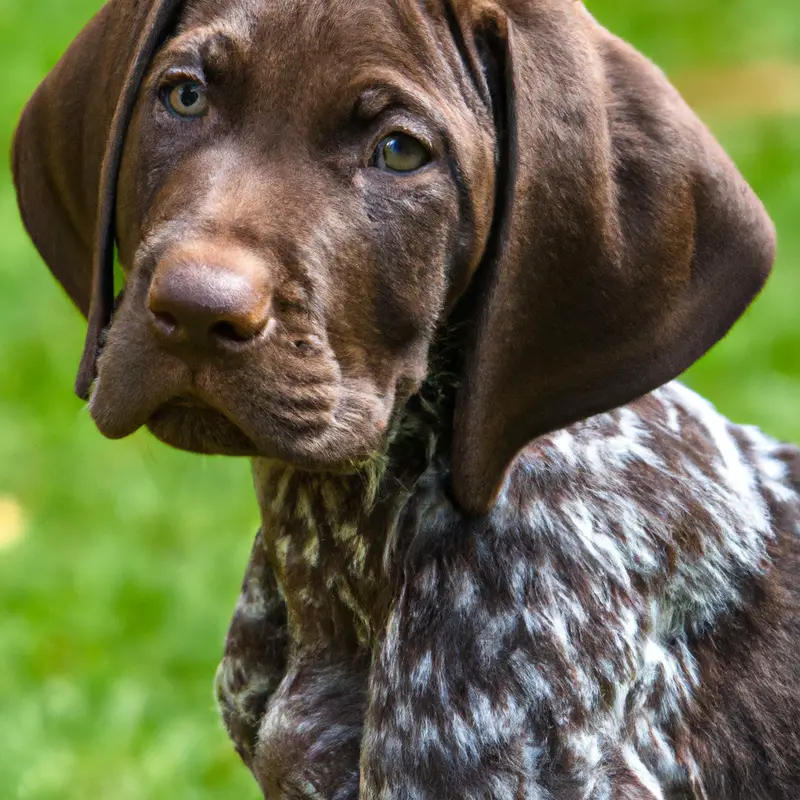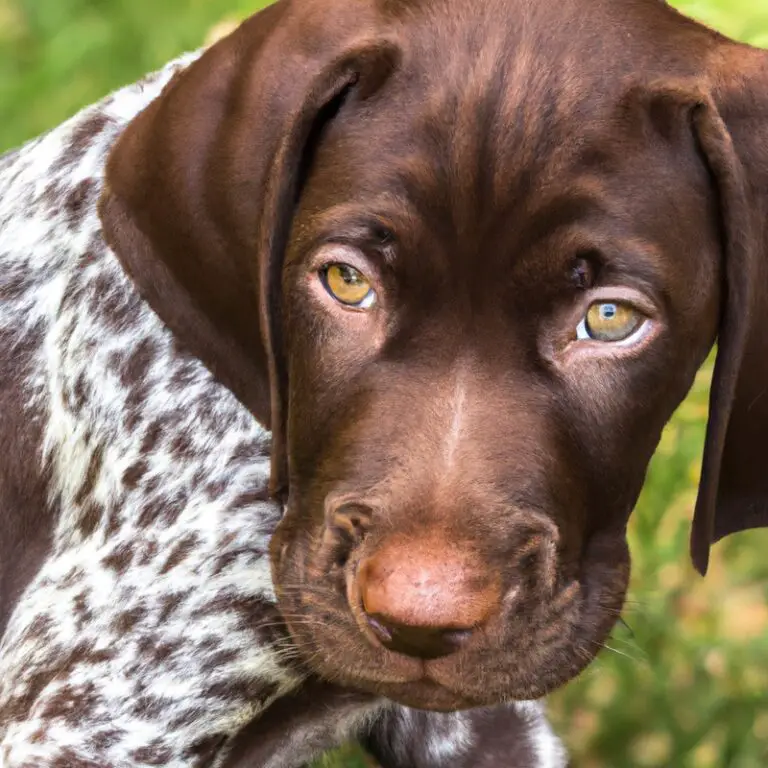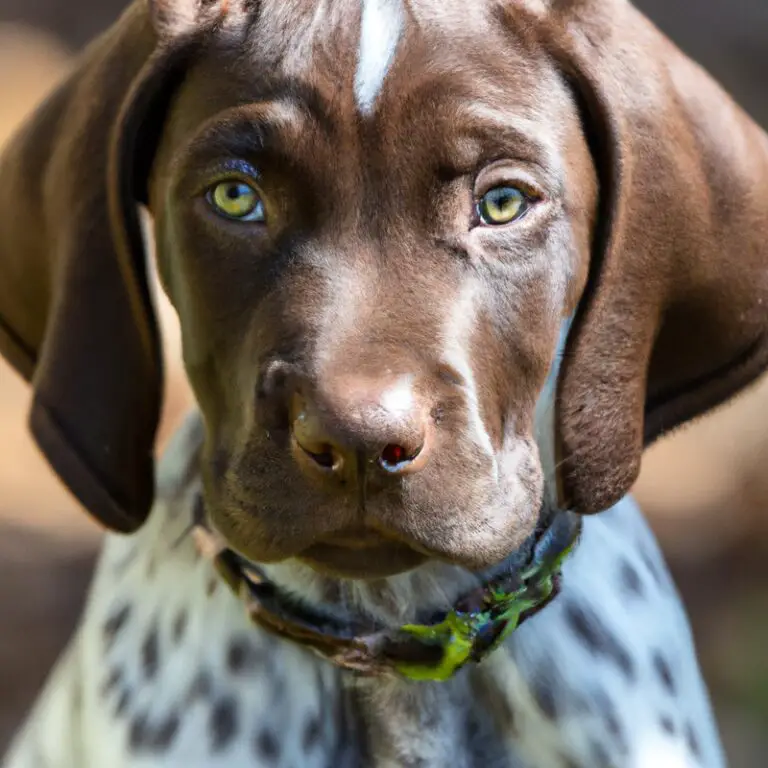How Do I Introduce My German Shorthaired Pointer To New Cats In The Household?
Key Takeaways:
- Gradual introductions are key to successfully introducing a German Shorthaired Pointer to new cats.
- Provide separate spaces for the dog and cats initially to allow for a safe and gradual introduction.
- Supervise all interactions between the dog and cats to prevent any potential conflicts.
- Positive reinforcement and reward-based training can help promote positive associations between the dog and cats.
Are you a proud owner of a German Shorthaired Pointer but unsure about how to introduce them to new cats in your household? Don’t worry, I’ve got you covered! As a fellow dog lover and experienced pet owner, I understand the importance of creating a harmonious environment for all our furry friends.
In this article, I will share my insights and expertise on how to successfully introduce German Shorthaired Pointers to cats, ensuring a smooth transition and a happy coexistence.
From understanding their innate nature to implementing proper introduction techniques, I’ll guide you every step of the way. So, let’s dive in and create a paw-sitive environment for everyone involved!
| Step | Instructions |
| 1 | Start by providing a safe, separate space for the new cat. This can be a spare room or a large crate with essential items like litter box, bed, and water/food bowls. |
| 2 | Allow the GSP and the new cat to sniff each other’s scent without direct physical contact. Use scent swapping techniques like exchanging bedding or rubbing a cloth on one animal and then the other. |
| 3 | Gradually introduce visual contact between the GSP and the new cat. Use baby gates or crates to create a barrier while they observe each other without any potential harm. |
| 4 | Supervise the first face-to-face meeting between the GSP and the new cat. Use leash and harness to restrain the GSP while allowing them to see each other up close. Reward calm behavior and discourage any signs of aggression. |
| 5 | Continue supervised interactions, gradually increasing the time and decreasing the physical barriers between the GSP and the new cat. Always prioritize safety and provide positive reinforcement for appropriate behavior. |
| 6 | If aggression or tension persists, consider seeking help from a professional animal behaviorist. They can provide guidance and create a tailored plan based on the specific needs of your GSP and the new cat. |
Understanding the Nature of German Shorthaired Pointers and Cats
Traits and Characteristics of German Shorthaired Pointers
German Shorthaired Pointers (GSPs) are energetic, intelligent, and versatile dogs. They have a friendly disposition and are known to be affectionate towards their families.
GSPs are highly active and require regular exercise to keep them happy and prevent boredom.
They are also known for their hunting capabilities, as they have a strong prey drive. GSPs are quick learners and excel in various activities, such as obedience training and agility.
Their loyal and protective nature makes them great companions and family pets.

Traits and Characteristics of Cats
Cats have a unique set of traits and characteristics that make them fascinating companions. First and foremost, cats are known for their independence.
Unlike dogs, they don’t require constant attention and can entertain themselves for hours.
They are also highly agile and excellent climbers, making them great explorers of vertical spaces in your home. Another notable trait is their grooming behavior.
Cats are meticulous self-cleaners, constantly licking their fur to keep it clean and tidy.
This grooming serves multiple purposes, including temperature regulation, scent marking, and stress relief. Cats are also known for their hunting instincts.
Even well-fed indoor cats retain this natural instinct and may display it through play behavior, such as stalking and pouncing on toys or objects around the house.
It’s important to provide them with appropriate outlets for this behavior, like interactive toys. Furthermore, cats are crepuscular animals, meaning they are most active during dawn and dusk.
This can explain their tendency to nap during the day and be more playful and energetic in the evening.
Understanding this natural rhythm can help ensure they get the mental and physical stimulation they need. Lastly, cats are highly territorial animals.
They mark their territory through scent glands and may show territorial aggression towards unfamiliar cats invading their space.
This is an important consideration when introducing a new cat to your household or when bringing in other pets.

Preparing Your Home for the Introduction
Creating Safe Spaces for Cats and Dogs
Creating safe spaces for cats and dogs is essential when introducing them to each other. First and foremost, make sure each pet has its own designated area.
This can be a separate room or a specific corner of the house where they feel secure and can relax without any interaction with the other pet.
Providing multiple hiding spots is crucial. Cats often seek out elevated spaces, so providing cat trees, shelves, or even empty bookcases can give them a safe place to observe from.
Dogs, on the other hand, may prefer a cozy crate or a designated corner with a comfortable bed.
Another crucial aspect is scent swapping. By swapping bedding or rubbing a towel on one pet and placing it near the other, they can become familiar with each other’s scent, which can help ease future interactions.
Consider utilizing baby gates or pet doors to gradually introduce them to each other.
This allows for visual and olfactory interactions while still maintaining a safe physical distance.
Introducing Scent and Familiarity
Introducing scent and familiarity is a crucial part of introducing your German Shorthaired Pointer to new cats in the household. First and foremost, it’s important to let each pet become familiar with the scent of the other before any physical interaction takes place.
Here are a few steps to help you with this process:
- Start by exchanging bedding or blankets between the pets. This allows them to become familiar with each other’s scent in a non-threatening way.
- Rub a cloth or towel on one pet and then gently rub it on the other pet. This helps transfer the scent and further familiarizes them with each other.
- Gradually introduce the pets to each other’s environment. For example, let the cat explore the dog’s area and vice versa. This helps them become accustomed to each other’s presence without direct interaction.

Setting Up Controlled Interactions
The Importance of Supervision and Patience
When introducing your German Shorthaired Pointer to new cats in the household, it’s important to emphasize the role of supervision and patience. Firstly, supervision is crucial to ensure the safety of both your dog and the cats.
By keeping a watchful eye on their interactions, you can intervene if any signs of aggression or stress arise.
This will help prevent any potential harm or negative experiences. Secondly, patience is key.
Each animal needs time to adjust and get used to each other’s presence.
Rushing the process can lead to anxiety and tension. Give them the time they need to gradually become comfortable with one another.
So
Controlled Visual and Scent Exposures
Controlled visual and scent exposures are important when introducing your German Shorthaired Pointer to new cats in the household. First and foremost, start with visual exposures.
This means allowing the animals to see each other from a safe distance.
Use a baby gate or a screen door to create a barrier between them. This way, they can observe each other without any direct contact.
Next, focus on scent exposures.
Swap bedding or blankets between the cat and the dog, so they can get familiar with each other’s scent. This helps them to associate the scent with something positive.
Proper Introduction Techniques
Using a Crate or Barrier for Initial Encounters
Using a crate or barrier for initial encounters is a helpful way to introduce your German Shorthaired Pointer to new cats in the household. It allows for a controlled and safe environment for both the dog and the cat.
Place the cat in a separate room with a barrier or in a crate, and allow the dog to approach and observe from a distance.
This way, they can start getting used to each other’s presence without any direct interaction. Gradually decrease the distance between them over time, always ensuring the safety of both animals.
Gradual Introduction in Controlled Environments
First and foremost, when introducing your German Shorthaired Pointer to new cats in the household, it’s important to take things slowly and create a controlled environment for their meeting. Gradual introduction is key in ensuring a positive and safe interaction between your dog and the new cats.
Start by allowing each pet to familiarize themselves with each other’s scent.
You can do this by swapping bedding or using a cloth to rub each pet and then placing it near the other pet’s sleeping area. Next, create a physical barrier such as a baby gate or a screen door, so they can see and smell each other without direct physical contact.
This allows them to start getting used to each other’s presence.
Monitor their reactions closely during this stage. Look for signs of calmness and curiosity rather than aggression or fear.
If any negative reactions occur, it’s important to separate them and give them more time to adjust before trying again.
Once both the cat and dog seem comfortable with each other’s presence, you can start allowing short, supervised face-to-face interactions. Keep them on a leash or hold the cat securely in your arms to ensure safety.
Gradually increase the duration of these interactions as long as both pets remain calm and relaxed.
If at any point either pet becomes stressed or agitated, separate them and try again later. Always remember to reward both pets for good behavior during these introductions.
Positive reinforcement, such as treats and praise, can help create positive associations and reinforce their good behavior.
Positive Reinforcement and Rewards
Encouraging Calm and Appropriate Behaviors
When introducing your German Shorthaired Pointer to new cats in the household, it’s important to encourage calm and appropriate behaviors. Here are some tips to help you navigate this process:
- Stay calm and relaxed yourself: Dogs can pick up on our emotions, so it’s crucial to remain calm and positive during the introduction.
- Provide a safe space for the cats: Make sure the cats have their own area where they can retreat to if they feel overwhelmed. This could be a separate room or a tall cat tree.
- Use positive reinforcement: Reward your dog for calm and appropriate behavior around the cats. Treats and praise can go a long way in reinforcing positive interactions.
- Gradual introductions: Start by allowing the dog and cats to sniff each other from a distance, using baby gates or crates to ensure safety. Slowly increase the amount of time they spend together under supervision, rewarding calm behavior at each step.
Rewarding Good Interactions
Rewarding good interactions is a key aspect of introducing your German Shorthaired Pointer to new cats in the household. By reinforcing positive behaviors, you can create a harmonious environment for everyone.
First and foremost, make sure to have plenty of treats on hand.
Whenever your dog and the new cat have a successful interaction, give them both a treat as a reward. This will help them associate good behavior with positive outcomes.
Additionally, lavish them with praise and affection to reinforce their good interactions.
Remember to be patient and consistent in rewarding good behaviors, as this will help your German Shorthaired Pointer and the new cat establish a positive relationship over time.
Monitoring and Gradual Progression
Recognizing Warning Signs and Body Language
Recognizing warning signs and understanding your German Shorthaired Pointer’s body language is essential when introducing them to new cats in the household. Pay close attention to your dog’s behavior for any signs of aggression or discomfort.
Watch for raised hackles, stiff body posture, growling, or intense staring.
These are clear warning signs that your dog may not be ready to interact with the cats. Additionally, observe their body language, such as their tail position, ear position, and overall posture.
A relaxed and loose body indicates they are comfortable, while a tense and rigid body suggests they may be stressed.
Stay vigilant and be ready to intervene if necessary to ensure a safe and harmonious introduction for everyone involved.
Incrementally Increasing Access and Interactions
Incrementally increasing access and interactions is key when introducing your German Shorthaired Pointer to new cats in the household. Instead of rushing the process, take it step by step to ensure a smooth transition.
Start by allowing the pets to interact through a barrier, such as a baby gate, so they can see and smell each other without direct contact.
This helps them become familiar with each other’s presence. Next, gradually increase their access to each other by swapping scents.
You can do this by exchanging bedding or rubbing a towel on each animal and then giving it to the other.
Once they seem comfortable with these steps, you can try supervised nose-to-nose introductions in a controlled environment. Keep the interactions short and positive, rewarding both pets for calm behavior.
Consultation with a Professional
Seeking Expert Advice
Seeking expert advice is always a smart move when introducing your German Shorthaired Pointer to new cats in your household. Professionals who specialize in animal behavior can provide valuable guidance and support throughout the process.
They will assess each individual pet’s temperament and offer personalized strategies to ensure a smooth transition.
Experts can recommend gradual introductions, using scent swapping techniques, and creating safe spaces for both pets. Their expertise will help you navigate any potential challenges and ensure a harmonious coexistence between your dog and cats.
Professional Training and Behavior Modification-
Professional training and behavior modification are key aspects when it comes to introducing your German Shorthaired Pointer to new cats in the household. First and foremost, consulting with a professional trainer or behaviorist who specializes in dog-cat introductions is highly recommended.
They can provide you with guidance tailored to your specific situation.
To ensure a successful introduction, it’s important to focus on positive reinforcement and reward-based training methods. These techniques help your dog associate positive experiences and feelings with the presence of cats.
Another crucial aspect is gradual and supervised introductions.
Start by keeping the dog and cat separated, allowing them to become familiar with each other’s scents through a gradual scent exchange. Then, you can progress to supervised visual introductions, using baby gates or crates to ensure safety.
During these introductions, keep the dog on a leash to have control over their movements and prevent any unwanted behaviors.
Redirect their attention with commands and treats to reinforce positive behavior. By implementing a consistent routine and providing enrichment activities for both your dog and cat, you can help create a positive and harmonious environment in your household.
Final Verdict
Introducing a German Shorthaired Pointer to new cats in your household requires careful preparation, controlled interactions, and positive reinforcement. By creating safe spaces, using scent and familiarity, and implementing gradual introduction techniques, you can foster a harmonious relationship between your dog and cat.
It’s essential to monitor their interactions, recognize warning signs, and seek professional advice if needed.
Remember, patience and supervision are key, and with time and consistent training, your dog and cat can become lifelong companions. Trust in the proven strategies discussed in this article and enjoy the journey of creating a happy and cohesive pet family.







